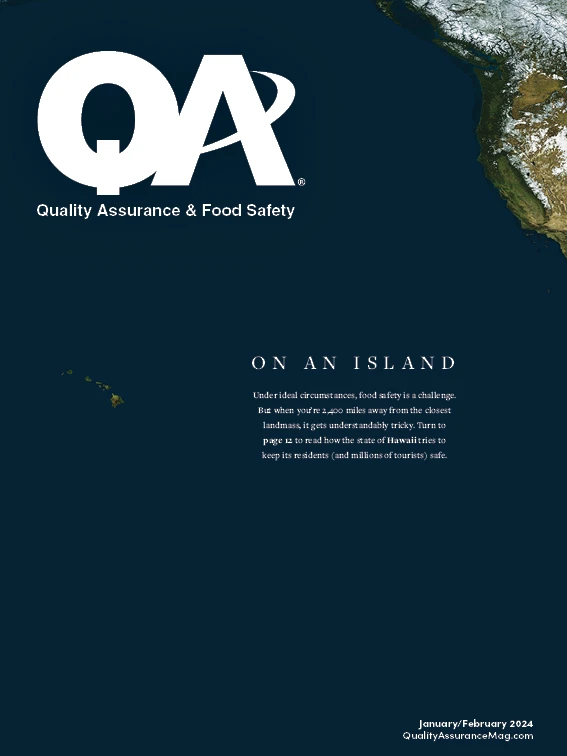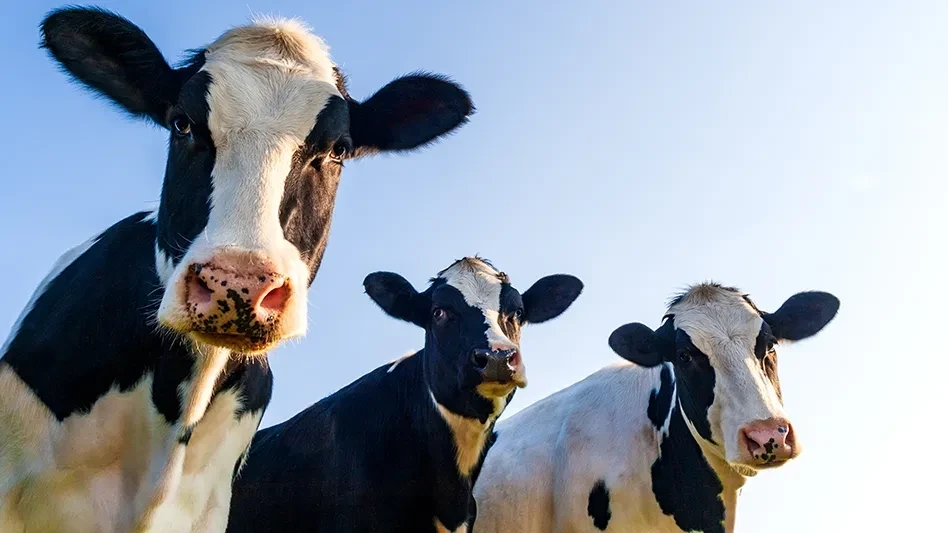
© Soru Epotok | Adobe Stock
Anyone in the food industry knows that birds can be a nuisance and threaten food facilities. Certain species of birds can carry diseases that can be transmitted to humans through contaminating food with their droppings and feathers. In addition, when birds are present in large numbers, they leave behind a mess that is difficult to clean up by hand, and they may even damage roofs and other equipment on your property.
All this to say, a bird problem is something that food facilities need to do everything in their power to prevent, and when it occurs, they need to take immediate action to remedy the situation.
THE SOURCE. Birds are drawn to food facilities for various reasons, but the primary attraction is the food found inside. With their keen eyesight, birds can see the food from a distance and access the facility through open doorways, where they can then become trapped inside.
If your facility is equipped with receiving docks, this can also provide an entry area for birds. When birds set up nests in the rafters of your facility, this can cause serious health concerns for you and your customers.
THE ISSUE. According to the National Audubon Society, there are 821 different North American bird species. Certain birds, such as sparrows, woodpeckers, waterfowl, pigeons and blackbirds, are more likely to become pests than other species. These species of birds can pose a significant health hazard to you, your employees and anyone who consumes the food produced in your facility and therefore require strong bird-proofing and bird-control strategies.
Birds inside a facility typically represent the bird population outside the building, where they take advantage of ledges, pipes and awnings to roost and nest. Outside the facility, their droppings are unsightly, whereas inside the facility, they can become a major health hazard. Once inside, birds damage packaging and food items by defecating on products and people.
Bird control is essential in food production facilities inside and outside the building. These pests can carry diseases and pathogens that can be transmitted to humans once they contaminate food produced in a bird-infested property, quickly leading to food poisoning and other related illnesses. As mentioned earlier, birds can also cause physical damage to food products and production equipment, leading to financial losses for your facility. Implementing effective pest control measures discussed below can help protect the safety and integrity of food products in your facility.
THE SOLUTIONS. Bird control is a problematic issue for many businesses, and mitigation can be a precarious issue in North America. The Migratory Bird Treaty Act protects and conserves native migratory bird populations, which limits bird control methods for certain species.
Another limiting factor for food facility operators is the prioritization of taking care of pest issues in humane and sustainable ways and ensuring that whatever method you use will not be temporary. In general, removing birds from inside a facility is very challenging. In larger facilities, the birds are free to fly around, and there are many spots throughout the location to conceal themselves.
Bird control is essential in food production facilities inside and outside the building.
That being said, experts have developed removal methods that can be tailored to specific bird species and individualized characteristics of building interiors.
EXTERIOR BIRD CONTROL. If you have a bird problem outside your facility, chances are it won’t be long until this problem moves indoors. To properly take care of this problem, install bird barriers, such as bird netting, to close off nesting areas. Birds often build their nests at high points on a building, such as eaves or chimneys, so install netting in these high-interest areas.
Next, install bird deterrents to keep birds off ledges, pipes and awnings. These deterrents include bird spikes, wiring or reflective deterrent rods.
Now that you have these preventative measures installed, you should also block the common entry points that birds can access in your facility — doors and windows. You can use screens, vents and other physical barriers to help keep doors and windows secure. Many food facilities also install automatically closing doors to ensure they are never left open, which is when birds will take the chance to fly in towards the heat and food.
Whatever barriers you install, be sure to also go through regular inspections and maintenance in your building to identify and seal off potential entry points that have been breached.
INTERIOR BIRD CONTROL. The first step for bird control inside your facility is to minimize available food sources. If no food sources are available, birds will be much less likely to return after removal and may even begin to leave on their own if they are not stuck in your facility. Get rid of these food sources by properly covering ingredients and keeping your facility exceptionally clean when not in use. Minimizing food sources may require cooperation between the management team and employees, but this is the most effective way to prevent future bird pest situations.
Properly cleaning your facility will not only help with bird prevention but also prevent other pests, such as mice and cockroaches, from infesting your location. Proper cleaning routines include ensuring the floor stays clear of food and debris, dirty dishes are properly and efficiently taken care of and trash cans are regularly changed and cleaned. In addition, incorporate regular spot cleaning of high-contamination areas in your facility. By cleaning effectively, pests in general will be much less likely to settle in your establishment.
Bird control can be difficult for food facilities, but it is doable with the appropriate resources. By taking part in the proper preventative measures now, it will be much easier for you to manage potential pest situations in the future. If you are struggling with a bird problem and finding it challenging to manage, it’s best to take care of it as soon as possible. Working with bird removal and prevention experts will help ensure you sustainably and humanely remove pests and efficiently prevent future situations.

Explore the January/February 2024 Issue
Check out more from this issue and find your next story to read.
Latest from Quality Assurance & Food Safety
- IDFA Presents Leadership Award to Six Federal Officials at Annual Celebration of Dairy Reception
- Seeding The Future Global Food System Challenge is Changing Lives: Winners Reflections
- Raw Farm Products Recalled Following Bird Flu Virus Detections
- FDA Issues 2024 Voluntary National Retail Food Regulatory Program Standards
- GSA Launches Assurances Platform, Prism and Webinar Series in Partnership with Wholechain
- Multistate E. coli Outbreak Linked to Iceberg and Romaine Lettuce Blend
- FDA, USDA Seek Information About Food Date Labeling
- William Marler, Food Safety Advocate and Lawyer, Condemns Lack of Safety of U.S. Food Supply





